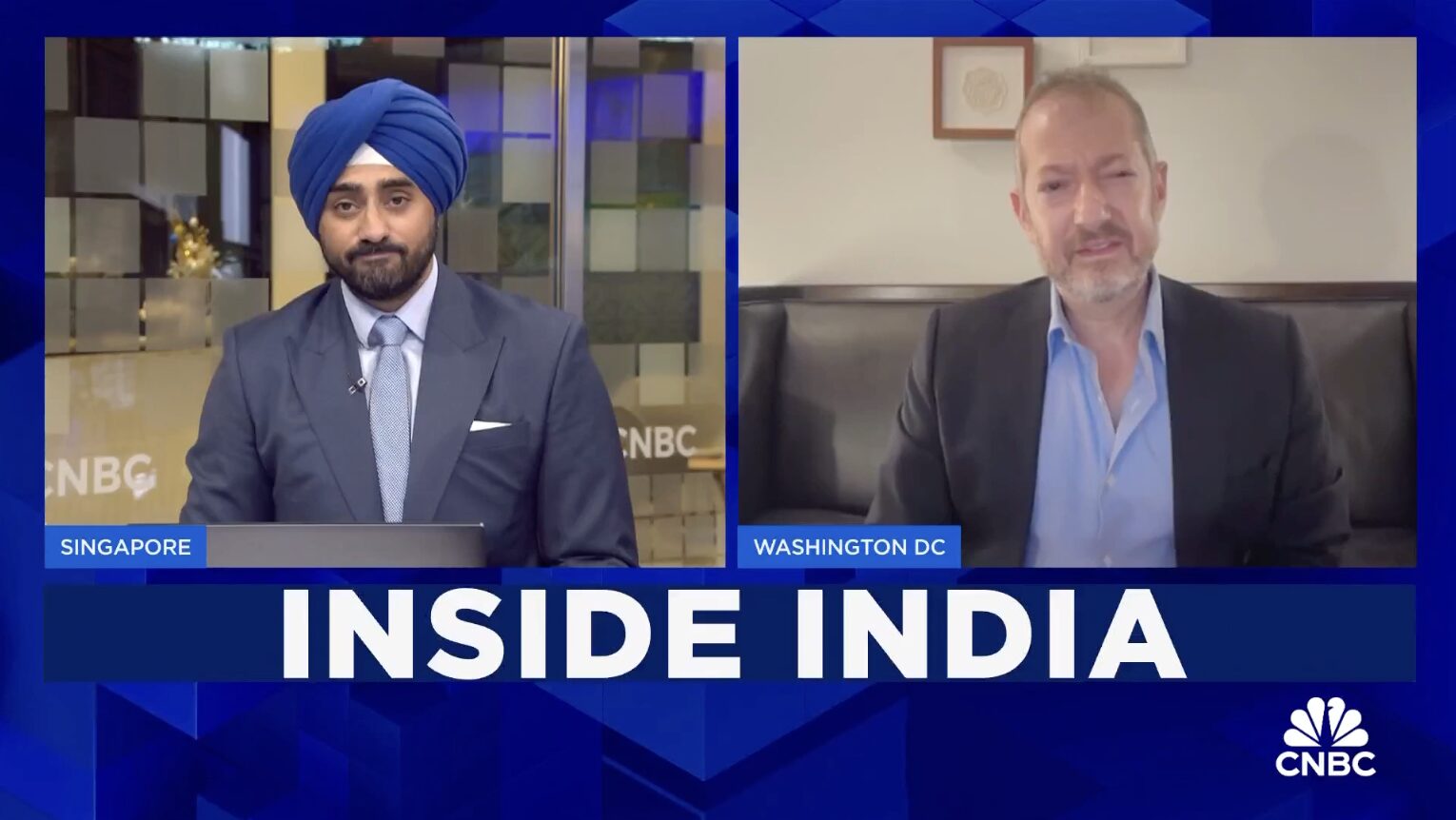
Dr. Sanjay Gupta: Explains the Science of Mouth-Taping
There’s a new sleep trend making waves: taping your mouth shut at night. Advocates say it can help you breathe better, sleep deeper, and even…
Thought Leader: Sanjay Gupta

The highly disruptive phase of the pandemic is over and the United States, as of Thursday, is ending its public health emergency. Daily life has by and large returned to normal. More people may be working from home than they were before the pandemic, but most Americans are back to traveling, eating out and going to the movies, theater and sporting events, largely without masks.
But this does not mean people aren’t still dying from Covid. They are. More than 1,000 died from the virus in the United States the week of April 27 through May 3, the most recent number available, and a daily average of 4,500 were hospitalized. Hot spots were still being reported in Alaska, Nebraska and Texas.
Those numbers nonetheless are vastly diminished from the darkest days of the pandemic (at its height, more than 4,000 deaths were reported on each of multiple days), and in tandem with this sharp decline, the urgency and prioritization of Covid by governments, foundations and others involved in the response have waned.
Many countries and organizations are taking stock of what can be learned from the Covid experience. In Singapore, the office of the prime minister recently issued an assessment of that country’s response to determine what worked and what didn’t. Such honest reflection is essential to ensure that the response to the next pandemic is better. Unfortunately, efforts stalled in Congress to create a national commission to render a nonpartisan assessment of how the country responded to a contagion that so far has killed some 1.1 million people.
We were among a group of public health experts appointed to a task force by then-President-elect Biden to advise him on the pandemic during his transition following his 2020 election. At that point, the pandemic was about to enter its second year. We have continued to be involved in the public health response. In this light, we offer 13 lessons, many of which are not yet fully appreciated or integrated into planning for the next dangerous infectious disease outbreak — one that, in all likelihood, many of us will encounter in our lifetime.
1) Human tolerance for lifestyle changes is limited.
Americans by and large endured substantial changes and restrictions in daily life and social interactions, including taking extra precautions like wearing masks, minimizing interactions and modifying lifestyles. But patience ran out. By September 2022, 30 months into the pandemic, 46 percent of Americans had returned to their prepandemic lives, according to an Axios-Ipsos survey. This was despite the fact on Sept. 1 of that year, an average of 90,000 new cases and more than 500 deaths were being reported a day. Patience appears to have been even shorter during the 1918 influenza pandemic. If the next public health emergency occurs soon, patience may run out sooner. Policymakers need to recognize the limitation of human perseverance and prepare accordingly.
Habits are hard to change. But people do change with the right incentives, like higher taxes on cigarettes or sugar-sweetened beverages to reduce unhealthy behaviors. During Covid, workplace vaccine mandates were effective in increasing vaccination rates. More creative use of incentives and judicious mandates that do not evoke substantial resistance should be examined.
People also tend to bend to social norms, those unwritten rules or peer practices that govern behavior in societies. That is why masking was easier in East Asia than in the United States. Masks were common in East Asia during the SARS epidemic of 2002 and 2003 and are often worn there to protect against transmitting or catching infections. In the absence of such norms, it may become necessary to draw on the persuasion of public officials, celebrities and other social influencers. Policymakers must strive to take public health actions that are translatable into social norms.
3) Trust is crucial.
Public trust in government and health organizations can reduce cases and deaths. The United States, already sharply divided politically, failed on this essential element of the response. In 2021, according to Gallup, only 39 percent of Americans had a great deal or fair amount of trust in the federal government to handle either domestic or international affairs. And a Pew survey in 2022 found that fewer than half of the respondents said the country had “given the right amount of priority to the needs of K-12 students, public health, quality of life.” Trust is easy to lose but very hard to regain. It requires honesty and transparency. Future policies, especially those based on uncertain or incomplete information — such as whether a Covid vaccine mandate should remain in place — must be evaluated in part by their impact on social trust.
4) Prepare now.
Disease surveillance capabilities, governmentwide coordination, the stockpiling of medical supplies and the ability to maintain resilient supply chains are essential preparations.
5) Reliable, real-time data is vital.
Data that enables public officials to track a virus also enables them to respond quickly to local outbreaks. But in the United States, a disjointed and poorly funded public health system and fragmented health delivery made collecting data challenging. This difficulty was exacerbated because public and private health systems did not provide complete data to state and local public health agencies. The federal government lacks authority to require real-time data collection unless there is an emergency. The federal government should mandate or create strong incentives for the timely reporting of uniform data by states and localities to a central, open-access data repository, which is essential for an effective response.
6) We know how to reduce the spread of airborne viruses like Covid.
Inexplicably, the World Health Organization and the Centers for Disease Control and Prevention had been very reluctant initially to embrace the reality that the SARS-CoV-2 virus, like most respiratory viruses, could spread through the air by microscopic particles and remain suspended and travel beyond a close group of people, otherwise known as airborne transmission. This viral transmission can be reduced through the use of high-quality N95 or KN95 respirators, by being outdoors and, when indoors, by increasing ventilation and improving indoor air filtration. The federal government needs to provide incentives to local governments to update their building codes to require better indoor air quality.
7) Vaccines reduce serious disease but are unlikely to prevent transmission. New therapeutics are needed.
Vaccinated people are far less likely to get seriously ill or die from Covid than those who are unvaccinated. Many people also benefit from boosters. While the vaccines have reduced the risk of hospitalization and death, we need to develop vaccines that induce broad-spectrum and long-lasting immunity to protect against rapidly mutating viruses. We also need to develop additional monoclonal antibodies, treatments necessary for immunocompromised individuals who don’t respond well to vaccines, and broad-spectrum antiviral medications to inhibit the replication of a wide range of viruses.
8) Responses should be tailored to local circumstances.
Over the last three years, the virus sometimes spread nationally and other times was limited to a few regions of the country. Viral surges repeatedly erupted in some areas but not others. The appropriate public health response should be modulated and based on viral prevalence, vaccination rates and other circumstances at the local level. Federal coordination is important, but we should rely on locally nuanced responses.
9) School should not be interrupted or placed online except in rare circumstances.
In-person education can continue during a respiratory pandemic like Covid, even before a vaccine is developed. Among other things, this would require improved indoor air quality by opening windows and using better HVAC and enhanced filtration systems, managing how lunch and other group activities are conducted, testing for infections and wearing high-quality masks during surges. When vaccines become available, teachers and students should be prioritized, although, as some countries showed, schools could reopen without vaccines by employing those other public health interventions. In the most severe outbreaks or those particularly deadly for children, closing schools temporarily may be necessary.
10) Social isolation is harmful and can increase mortality.
Early in the pandemic, much of society shut down. The result was an increase in social isolation that led to depression and the erosion of social skills.
While physical distancing is important to reduce the spread of airborne viruses, socializing can occur in parks and on playgrounds, streets, beaches and other outdoor venues where the air circulation is good. Even in pandemics, public spaces should remain open unless they are driving surges.
11) We need vaccine access and paid sick leave.
More lives can be saved by prioritizing the vaccination of the vulnerable — older people, for instance, in the case of Covid — and frontline workers in essential industries; improving indoor air quality; properly wearing high-quality N95 or KN95 respirators; and ensuring workers are supported with paid sick leave so they can take time off while they or household members are infectious and in need of care.
12) Indifference can kill.
For most of the 20th century, life became much safer as risks of death in car crashes and workplaces and from diseases declined. But Covid upended that narrative in the 21st century. Even so, people seem to have become inured to Covid, though it was the third leading cause of death in the United States in 2020 and 2021 and the fourth leading cause of death last year. Americans seemed to tolerate 200,000 or so Covid deaths a year — more deaths than strokes and diabetes and about five times the number from breast cancer. We worry that this indifference may be related to the fact that more than three-quarters of Covid deaths have been among older people, minorities and those with obesity and diabetes. That, of course, is unacceptable, and we must redouble our focus on the most vulnerable and treat them as the equals they are.
13) Covid will not be the last pandemic to strike the United States and the next one could be worse.
The United States is repeating its panic-and-forget approach to crises. Unless we adopt smart policies, in the next health emergency America will again rely on improvisation, trial and error and luck rather than data, planning and preparedness. And tragically, hundreds of thousands if not millions could suffer and die as a result of our lassitude.
As the public health emergency ends, we worry that the focus on other crises will push aside the planning and the execution of our recommendations. Future generations will pay the price unless we respond with substantive reforms.
Ezekiel J. Emanuel, Luciana Borio, Rick Bright, Michael T. Osterholm, Jill Jim and David Michaels were members of the Biden-Harris Transition Covid Advisory Board, appointed by the then-incoming Biden administration in November 2020 to provide advice on the government’s pandemic response.
Dr. Sanjay Gupta: Explains the Science of Mouth-Taping
There’s a new sleep trend making waves: taping your mouth shut at night. Advocates say it can help you breathe better, sleep deeper, and even…
Thought Leader: Sanjay Gupta
Joe Grogan: The Alzheimer’s Economic Threat
Social Security could become insolvent in as little as eight years, with more people retiring and living longer and fewer paying into the program. Alzheimer’s disease is…
Thought Leader: Joseph Grogan
Evan Feigenbaum on the outcomes of Putin’s India visit
Evan Feigenbaum of the Carnegie Endowment for International Peace argues that none of India’s major challenges can be meaningfully addressed by deepening ties with Russia.…
Thought Leader: Evan Feigenbaum

